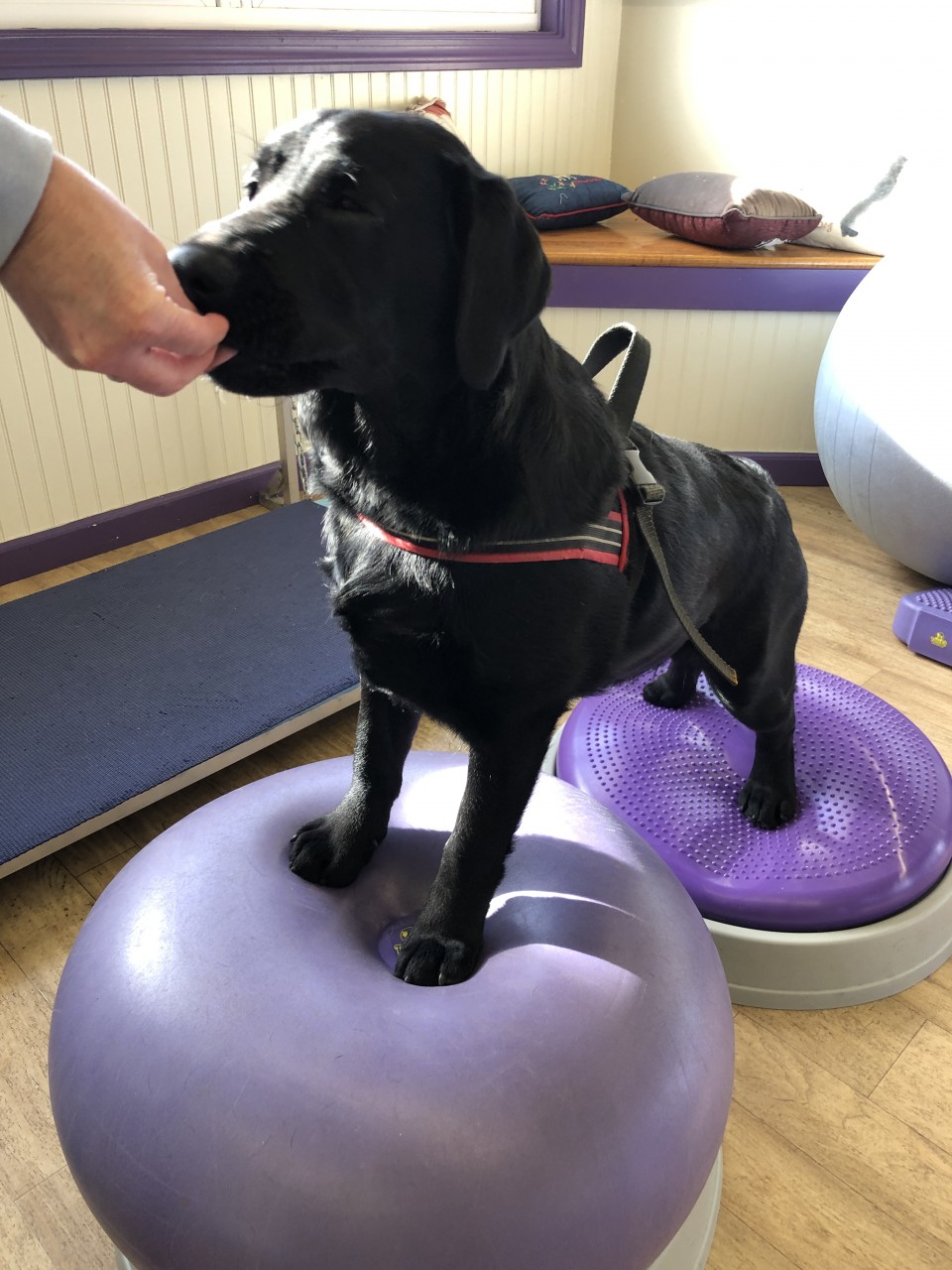Bum Knees: The Dog Sport Competitor's Guide to Common Dog Knee Problems
Knees are a fact of life with dogs. Unfortunately, so are bum or dysfunctional knees. No one wants to hear their dog has a bum knee or an injury to their knee. But if you are 'in dogs', you will experience a bum knee at some point. It is just part of the deal!
What is a bum knee? It can be anything from a torn cranial cruciate ligament ('cruciate', ACL, or CCL to some), luxating patellas, or straight knees, to osteoarthritis or arthritis, meniscal injuries, bone deformities, or a soft tissue injury. Of course, there are also the outliers: fractures, lesions, and growth related problems.
And some breeds are more prone to certain knee problems than others. For example, many small breeds have an inclination to luxating patellas. Rottweilers, Labrador retrievers and Golden retrievers are prone to cranial cruciate injuries.
What a Bum Knee Means for Your Dog
Dogs normally bear thirty to forty percent of their weight on their hind limbs or back legs, and sixty to seventy percent on their forelimbs or front legs. When there is an injury or a chronic problem, the dog does not place as much weight on the affected hindlimb.
It may be difficult to see decreased weight bearing, especially initially, because the dog can shift more of their weight onto the forelimbs and the other hindlimb. That can often prevent us from catching the problem early.
Pain and inflammation cause lameness. Whenever a dog is lame, there is pain and inflammation. This is important for many reasons. The first one being that if there is pain and inflammation, the muscles will not work to the best of their ability. Pain and inflammation will lead to muscle atrophy. Muscle atrophy will lead to additional pain and inflammation, continuing the cycle.
The second reason it is important to understand if the dog is lame, it is almost always caused by pain and inflammation. If your dog is not walking properly, or is lame, there is undoubtedly pain and inflammation. I find that many owners do not understand this. Limping or lameness should be addressed. We do not want to walk or exercise a dog to lameness.
There are many options for treating bum knees in our canine friends. The options include anything from surgical options to conservative options. I do prefer to try conservative options first, however, that may just not be practical in some cases. The goal is always the multimodal approach – reduce the pain, inflammation and dysfunction, and improve the strength, range of motion, and overall function. There are many ways to relieve the pain and inflammation inclusive of pharmaceutical interventions, homeopathic remedies, modalities, massage, and more (I will discuss all of these in the Bum Knee course). And once the inflammation and pain are reduced, we will want to focus on appropriate strengthening, range of motion and functional activities. I will also discuss all of these in the course.
Common causes of knee problems in dogs
Many dogs do have cranial cruciate ligament deficient stifles. Unlike people who tear their cruciate ligament acutely – ACL tear – dogs tend to suffer from more of a chronic condition.
In other words, the problem may begin with a slight injury. For example, it may all begin when a dog goes tearing after a squirrel and slips on the wet grass! They may come back limping on a hindlimb, but the limp disappears after a few days.
The limp may be caused by an injury to the cranial cruciate ligament. Typically, there is a minor tear, or damage to the ligament. The dog recovers quickly but it causes a little bit of instability. The small amount of instability leads to more motion. The increased motion leads to inflammation and pain, which as we learned, leads to weakness. This becomes a vicious cycle, leading to more pain and inflammation, and an increased chance of a further tearing of the ligament. Many dogs may then have a complete tear or maintain at a partial tear. Either situation does require attention.
Ligaments assist dogs with balance – they do the same with us! They also act as a check to reign in and limit motion. If a ligamentous injury occurs, or has occurred, it is important to work on balance. Balance exercises are one of the staples or core program in ligamentous injuries. Bum knees often need balance exercises, beginning with simple weight shifting.
Asking the dog to lift their head up will increase the weight on the hind limbs, and assist with weight bearing as well as challenge their balance. This may be further increased by asking the dog to stand on an uneven surface, such as a phthalate free disk or surface. Walking on a low level unstable surface is another great exercise to perform balance exercises.
By accepting you will be accessing a service provided by a third-party external to https://www.fenzidogsportsacademy.com/

